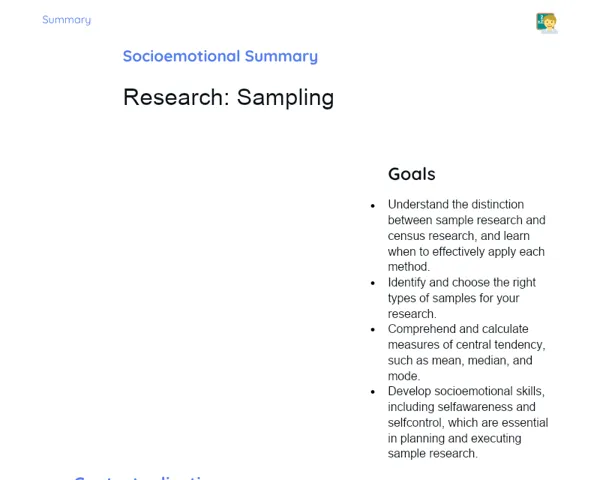Summary Tradisional | Spatial Geometry: Surface Area of the Pyramid
Contextualization
Spatial geometry is an important area of mathematics that examines three-dimensional figures, which include width, height, and depth. Among these, the pyramid is a significant geometric shape known for its historical and contemporary relevance. A pyramid is defined by a polygonal base and triangular faces that converge at a single point, called the vertex. This geometric solid features prominently in architecture and engineering and serves as a classic example in geometry studies due to its simple yet profound mathematical characteristics.
Grasping how to calculate the surface area of pyramids is vital for various real-world applications. From building monuments to civil engineering projects, being familiar with the formulas for calculating the lateral and total surface areas of a pyramid is essential knowledge. These formulas guide us in estimating the materials required for construction while also enhancing our understanding of the geometric principles that dictate its shapes. In this lesson, we will look at how to effectively apply these formulas to different forms of pyramids, underscoring the varied calculations involved based on the base shape.
To Remember!
Definition of Pyramid
A pyramid is a geometric solid identified by its polygonal base and triangular faces that meet at a single point, known as the vertex. The base can take the form of any polygon—like a triangle, square, or pentagon. The triangular sides are termed the lateral faces, while the vertical distance from the vertex to the base is referred to as the height of the pyramid.
This shape serves as a classic example of geometric solids appearing in both historical monuments, like the Egyptian pyramids, and modern architecture and civil engineering due to its stability.
A solid understanding of what a pyramid is crucial for engaging with its geometrical characteristics, particularly when calculating its surface areas. Pyramids provide a great opportunity to delve into spatial geometry because of their straightforward structure and rich mathematical attributes.
-
A pyramid has a polygonal base and triangular faces.
-
The vertex is the common point where all triangular faces converge.
-
The height is the perpendicular distance from the vertex to the base.
Formulas for Area Calculation
To find the surface area of a pyramid, you need to calculate the area of its lateral faces and its base. The formula for the lateral surface area is the total of the areas of the triangular faces. For a triangular face, we can use the area of a triangle formula, which is (base × height) / 2.
The total surface area of a pyramid combines the lateral surface area and the base area. The total area formula changes based on the base shape of the pyramid. For instance, for a pyramid with a square base, we calculate the area of the square base and then add it to the area of the four triangular faces. For a pyramid with a triangular base, we compute the triangular base's area and then include the areas of the three triangular faces.
Understanding and applying these formulas is key to tackling problems involving pyramids. Practicing with different base shapes ensures a comprehensive understanding and capability to solve diverse geometric problems.
-
The lateral surface area is the sum of the areas of the triangular faces.
-
The formula for the area of a triangle is (base × height) / 2.
-
The total area is the sum of the base area and the lateral area.
Practical Examples
To demonstrate the application of area calculation formulas, let's go through a couple of practical examples. For instance, consider a pyramid with a square base where each side measures 4 cm, and the height of each triangular face is 6 cm. The area of one triangular face would be (4 cm × 6 cm) / 2 = 12 cm². As there are four triangular faces, the lateral area would be 4 × 12 cm² = 48 cm². The area of the base is calculated as 4 cm × 4 cm = 16 cm², leading to a total area of 48 cm² + 16 cm² = 64 cm².
Another example features a pyramid with a triangular base, where the sides measure 3 cm, 4 cm, and 5 cm, with a height of 7 cm for each triangular face. We can use Heron’s formula to determine the base area: semiperimeter (s) = (3 cm + 4 cm + 5 cm) / 2 = 6 cm, so the base area = √[s(s - a)(s - b)(s - c)] = √[6(6 - 3)(6 - 4)(6 - 5)] = √36 = 6 cm². Subsequently, we compute the triangular faces' area and total it to get the lateral area and the overall area.
These examples exhibit how to apply the formulas across various scenarios, emphasizing the significance of practicing with diverse pyramid types to cement conceptual understanding.
-
Calculate the area of the base and triangular faces.
-
Utilize Heron's formula for triangular bases.
-
Sum the areas to determine the total surface area.
Guided Problem Solving
Problem-solving is a critical aspect of reinforcing learning about how to calculate the surface areas of pyramids. During the lesson, we tackled problems methodically to show the correct application of formulas. One of the problems focused on finding the lateral area of a pyramid with a square base, where each side measures 4 cm and the height of the triangular faces is 6 cm. The solution process included calculating the area of one triangular face and multiplying it by the number of faces.
Another scenario involved a pyramid with a triangular base and sides measuring 3 cm, 4 cm, and 5 cm, with a height of 7 cm. We employed Heron’s formula to establish the base area before computing the triangular faces' areas. Adding these areas together provided the total surface area. These instances guided students in implementing the formulas across different contexts.
Practicing problem-solving enables students to internalize processes and recognize potential challenges. Moreover, this practice stresses the significance of accuracy in calculations and understanding the sequence involved in solving geometric problems.
-
Solve problems step by step.
-
Apply formulas in different contexts.
-
Identify and rectify issues in calculations.
Key Terms
-
Pyramid: A geometric solid with a polygonal base and triangular faces converging at a common vertex.
-
Lateral Surface Area: The total area of the pyramid's triangular faces.
-
Total Surface Area: The addition of the base area and the lateral area of a pyramid.
-
Heron's Formula: A method for calculating the area of a triangle given the lengths of its sides.
Important Conclusions
Throughout this lesson, we examined the definition and features of pyramids, with a particular emphasis on computing their lateral and total surface areas. We discovered that a pyramid is marked by its polygonal base and triangular faces that meet at a single vertex, and that the lateral surface area sums the areas of these triangular faces. We also reviewed the essential formulas needed for these calculations, including Heron’s formula for triangular bases, applying these concepts through practical examples to ensure full comprehension.
Having a firm grasp of the formulas and methods for calculating the surface areas of pyramids is crucial in various practical applications, such as in architecture and civil engineering. Knowing how to compute these areas allows us to assess the quantity of materials required for constructing pyramid-like structures and deepens our appreciation of the geometric intricacies of these forms. Through hands-on examples and guided problem-solving, we demonstrated the practical application of these formulas across various scenarios, emphasizing the need for precision and ongoing practice.
I urge everyone to further their knowledge on this topic, as mastering these skills is vital not only for mathematics but also for numerous practical applications. The geometry of pyramids, with its deep-rooted history and modern-day significance, presents an extensive and captivating area for exploration and ongoing study.
Study Tips
-
Review the formulas and practical examples covered in the lesson, practicing with different pyramid types to strengthen your understanding.
-
Look to solve additional problems from textbooks or online resources, concentrating on the application of formulas in various contexts.
-
Engage in group study, discussing and solving problems with peers to exchange knowledge and problem-solving techniques.



